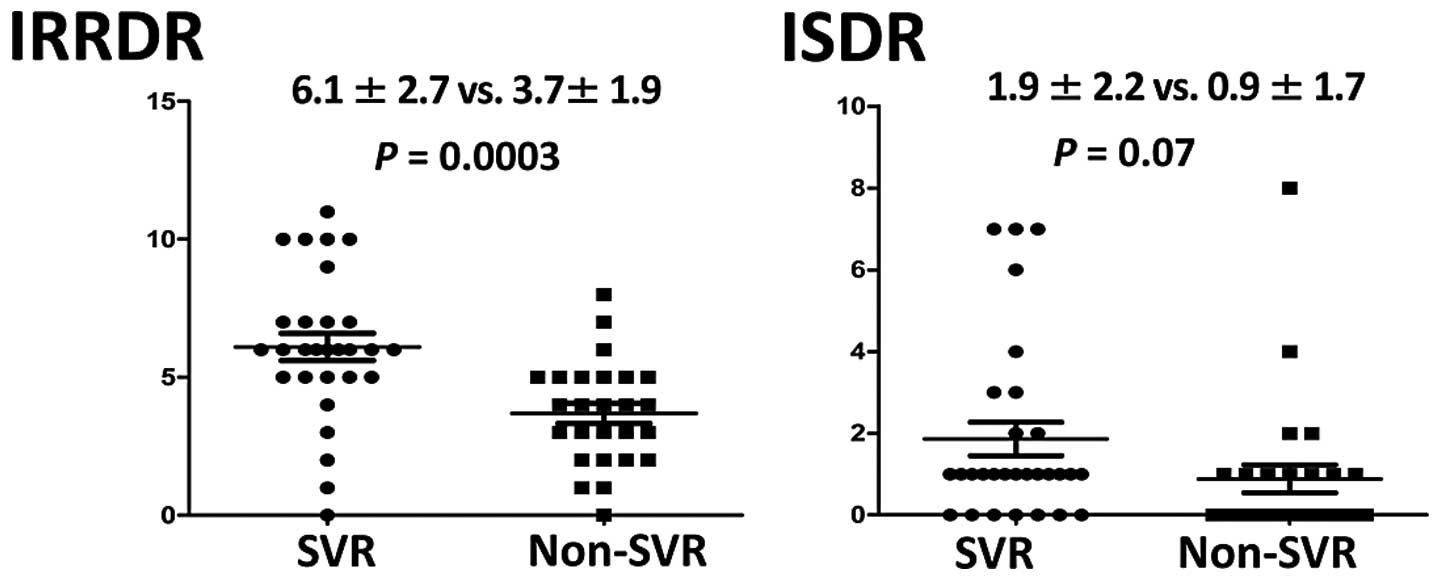Mutations in non-structural 5A and rapid viral response to pegylated interferon-α-2b plus ribavirin therapy are associated with therapeutic efficacy in patients with genotype 1b chronic hepatitis C
- Authors:
- Published online on: August 9, 2012 https://doi.org/10.3892/ijmm.2012.1093
- Pages: 1048-1052
Metrics: Total
Views: 0 (Spandidos Publications: | PMC Statistics: )
Total PDF Downloads: 0 (Spandidos Publications: | PMC Statistics: )
Abstract
For patients chronically infected with hepatitis C virus (HCV), mutations in the non-structural 5A (NS5A) gene are important predictive factors for the response to interferon (IFN) therapy. In the present study, factor analysis of the therapeutic response of patients following pegylated IFN and ribavirin combination therapy was assessed in a multicenter study. Chronic HCV-infected patients with genotype 1b and high viral load (n=96, mean age 56.5 years; 59 males, 68 females) treated with pegylated IFN-α-2b and ribavirin combination therapy were enrolled. This study was conducted at Kobe University Hospital and 25 affiliated hospitals in Hyogo prefecture. Sixty-five patients (68%) completed treatment with both pegylated IFN and ribavirin at >80% of the weight-based scheduled dosages. Patients who reduced or terminated therapy were frequently aged women (mean age 60.8 years; 11 males, 17 females). Overall, a sustained viral response (SVR) was achieved in 42 (44%) patients out of 96. Based on per-protocol-based (PPB) analysis, the SVR rate in patients with ≥6 amino acid (aa) mutations in the IFN resistance-determining region (IRRDR) (75%) or ≥1 aa mutation in the IFN sensitivity-determining region (ISDR) (61%) was significantly higher than that in patients with <5 aa mutations in IRRDR (30%) or no mutation in ISDR (29%). Multivariate analysis revealed that rapid viral response (RVR) (odds ratio, 18.1) and mutations of ≥6 in IRRDR (odds ratio, 15.5) were significantly associated with SVR. In conclusion, mutations in the NS5A region, particularly in patients with ≥6 aa mutations in IRRDR were strongly associated with a therapeutic response to pegylated IFN and ribavirin combination therapy.










